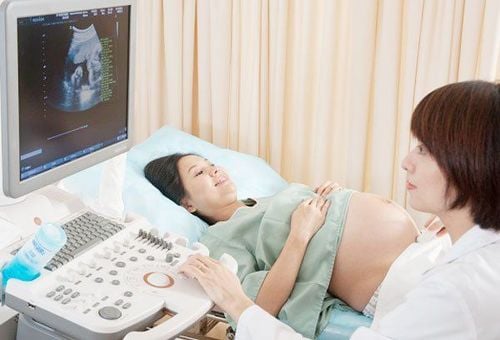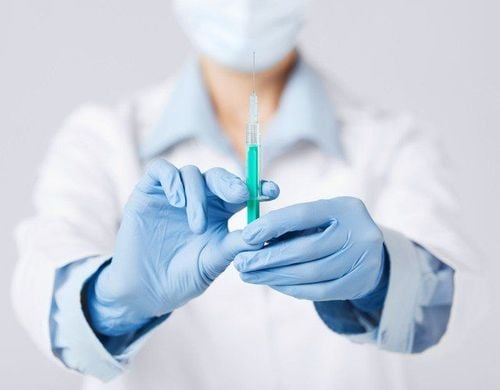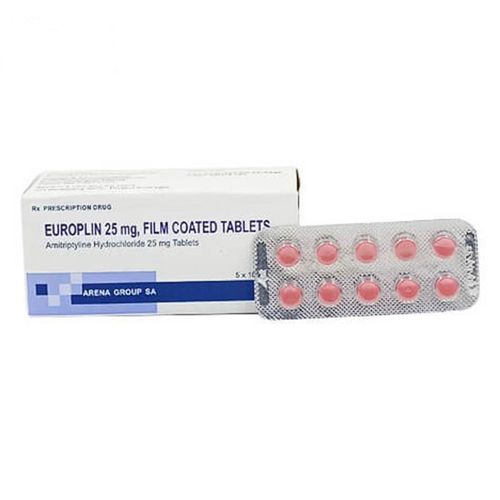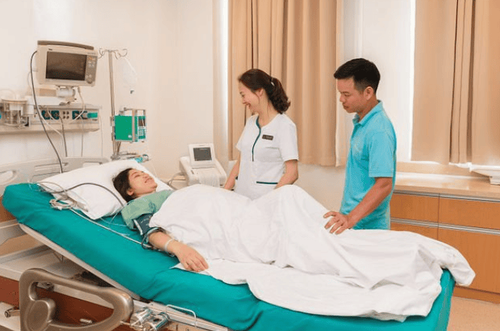This is an automatically translated article.
Posted by Doctor Nguyen Tat Binh - Department of Surgical Anesthesia - Vinmec Central Park International General HospitalAnesthesia is a general term for all forms of anesthesia that include sedation and/or painlessness to provide comfort to the patient during procedures or surgery. As a starting point, anesthesia has become increasingly important to ensure the success of all types of procedures and surgeries.
With the advancement of science and technology, today's anesthesia cases have become safer when performed and monitored by a team of well-trained and experienced anesthesiologists and nurses. professional practice.
1. How many types of anesthesia are there?
Depending on the instructions of the doctor performing the procedure or the surgeon, the anesthesiologist will offer the most appropriate methods, while ensuring enough anesthesia to perform at the request of the doctor. Indications both ensure patient safety and avoid the case of "abuse" of anesthesia.
Sedation is one of the "lightest" forms of anesthesia that ensures patient comfort during procedures such as gastrointestinal endoscopy, respiratory endoscopy or dental procedures and other surgical procedures. cases where it is necessary to control patients (children, the elderly, etc.) when taking MRI or CT scans. With sedation, the patient will not worry, sleep smoothly, no pain and no memory during the procedure. Cardiovascular and respiratory functions are maintained naturally by the patient and are constantly monitored by the anesthesiologist to ensure safety.

Chụp MRI bệnh nhân có thể được gây mê
Local anesthesia is often used for minor procedures or surgeries such as suturing a wound, removing small tumors that are shallow under the skin, or taking a tissue sample for testing. For larger surgeries, anesthesiologists must apply regional anesthetic techniques to ensure "blocking" of pain in an area such as the entire arm or leg for surgery. Corresponding to each area, doctors can choose to numb the nerve directly to that area, such as the femoral nerve, brachial nerve, or the entire nerve axis, such as the subarachnoid space. spinal cord) or an epidural. The benefits of these methods are good pain relief during and after surgery while the patient is fully awake and able to talk with the doctor. However, some disadvantages of this method are that the patient may be anxious due to awakeness during surgery or direct nerve damage. To minimize this situation, doctors can combine both anesthetic and sedation methods to make the patient more comfortable and gradually switch from neuraxial techniques to methods of fascial space anesthesia. safer techniques such as the vertebral column or the lumbar squamous cavity.
The last technique is general anesthesia, usually applied to major surgery, prolonged or in places where airway control is required. In this technique, doctors will apply anesthesia using a balance between three basic drugs including sedation, pain reliever, and muscle relaxant to control the entire patient. Patients will be given sedatives, analgesics, and muscle relaxants in turn, and then airway control devices such as laryngeal masks, endotracheal tubes, and ventilator support will be placed. During anesthesia, the patient will be continuously monitored pulse, blood pressure, heart rate, breathing rate, oxygen saturation in capillary blood... to ensure respiratory and cardiovascular function. Patients are also monitored for anesthesia, muscle relaxation to ensure adequate anesthetic supply, to avoid intraoperative awakening or post-operative muscle relaxant retention. In addition, depending on the type of intensive surgery such as cardiovascular or neurosurgery, doctors will monitor additional arterial pressure, central venous pressure or intracranial pressure... to resuscitate the patient. safest and most effective way.
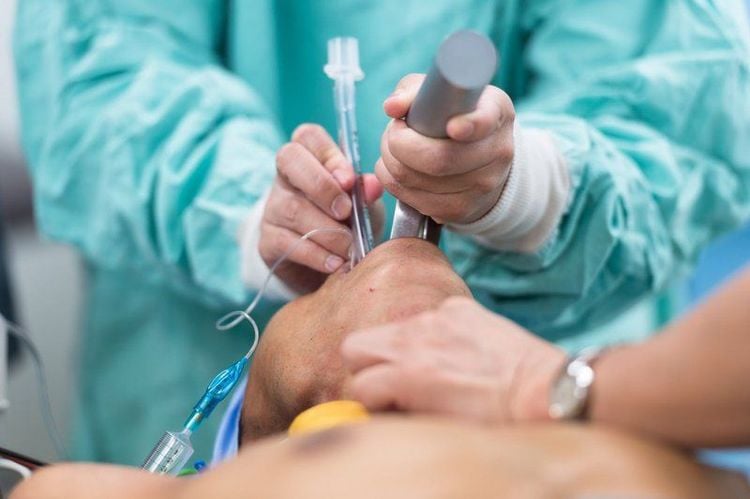
Người bệnh được đặt ống thở nội khí quản
2. Do I need an anesthetic consultation before surgery?
The answer is definitely that the patient needs to be evaluated before anesthesia to ensure safety before surgery. The assessment of physical condition and accompanying diseases before surgery helps doctors choose an appropriate method of anesthesia and postoperative pain relief. As a result, the operation will be safer, shortening the recovery time after surgery and the hospital stay. Except for cases requiring urgent emergency surgery, which will be evaluated quickly before surgery, most anesthesiologists will have an examination and consultation with the patient at least one day before surgery, some Special cases can be examined a few weeks in advance to plan a specific pre-operative preparation.
During the anesthesia consultation, the doctor will consider the risk factors that can affect the outcome of anesthesia and surgery by asking the patient about such as history of drug allergies, history of heart disease Cardiovascular (high blood pressure, coronary artery disease), respiratory (smoking, asthma, tuberculosis), medications the patient is taking that can affect blood clotting (aspirin), assessment of airway factors difficult (sleep apnea, open mouth...) or problems that may affect anesthesia (history of alcohol consumption or anesthesia complications). At the same time, evaluate the results of tests to survey the function of the liver, kidneys and other organs to make an overall conclusion about the general health status of the patient before surgery. Anesthesiologists will discuss and advise patients on stable treatment of comorbidities or additional screening for suspected diseases to prepare the best condition before surgery. The safest and most appropriate postoperative anesthesia and analgesia plan corresponding to the type of surgery and current health status will be consulted by the anesthesiologists. The benefits, the possibility of success, the prevention options as well as the risks that the patient encounters when performing this anesthetic technique are also discussed so that the patient understands and agrees before proceeding with the surgery.
Anesthesiologists also provide appropriate preoperative fasting guidelines for patients, eg minimum solid food for 6 to 8 hours before surgery, or water for at least 2 hours as a precaution. aspiration of food and water during anesthesia can lead to aspiration pneumonia.

Trước khi gây mê người bệnh cần được khám tổng thể
3. What did the anesthesiologists do to ensure my safety during the surgery?
With the information obtained from the anesthetic consultation session, the doctors will prepare the appropriate means and equipment to perform the anesthetic technique in the most effective and safest way.
For anesthetic techniques, doctors will use nerve detectors, ultrasound machines to accurately determine the nerve or position to perform anesthesia, minimizing nerve damage. Evaluation of the effect of nerve "blocking" will be performed to ensure that the patient is pain-free when the surgeon initiates the skin incision.
For sedation and anesthesia techniques, if the patient is predicted to have a difficult airway, the doctors will prepare the means to control the difficult airway, laryngoscope with video screen, flexible endoscope ... to make sure the endotracheal tube can be placed. Devices to monitor vital signs such as pulse, blood pressure, heart rate, breathing rate, CO2 concentration in exhaled air, oxygen saturation in capillary blood, temperature will be installed regularly to monitor continuity of the patient's cardiovascular and respiratory functions throughout the operation.
One of the problems patients are very worried about is waking up during surgery. This is a phenomenon where the patient knows all the developments during surgery but cannot "call for help" because of the inhibition by muscle relaxants. Although this phenomenon is rare, it leaves haunting or lasting psychological trauma for the patient. To prevent this, anesthesiologists will install additional equipment to monitor the level of anesthesia to ensure that the patient stays asleep and does not wake up suddenly during surgery.
Residual muscle relaxant after surgery is also one of the concerns of patients after surgery. Although the patient regained consciousness after the successful operation, uncontrolled retention of muscle relaxants can lead to subsequent respiratory failure and death. To prevent this, anesthesiologists will monitor the degree of “blockage” of the muscle relaxants and use neutralizing agents to neutralize all muscle relaxants at the end of the operation.
4. After surgery, I often have problems, is it dangerous or not?
At the end of the operation, usually the anesthesiologist will perform "anesthesia" and the patient will wake up right in the operating room or in the recovery room and continue to be continuously monitored after that for about 2 hours to ensure the patient has recovered movement, sensation as well as no longer affected by anesthetics and anesthetics before moving back to the ward to rest. In cases of complicated surgery or serious illness, anesthesiologists will continue to maintain a sleep state to continue resuscitation in the intensive care area (ICU) for the patient until the condition improve. In all cases, the patient should not panic, try to cooperate with the doctor to make the process of anesthesia successful and safe.

Người bệnh được nghỉ ngơi trong quá trình thoát mê và được theo dõi liên tục
Obviously, after surgery, patients often feel tired and mild pain. Some sensations such as nausea, vomiting, headache, dry mouth, sore throat, hoarseness, muscle pain, itching, chills are undesirable effects that can be experienced after anesthesia. However, patients should not be too worried because they can gradually disappear with warmth, rest or will be treated by doctors to relieve symptoms.
After the patient has left the recovery area and returned to the ward, instructions for post-operative care and monitoring will be handed over between the operating room and ward nurses to ensure that the patient is properly cared for. continuity. A multimodal analgesia plan including intravenous medication and local anesthetic techniques will be implemented by anesthesiologists to ensure patient comfort, early mobility, and recovery. soon after surgery.
Vinmec International General Hospital is one of the hospitals that strictly applies safe surgical anesthesia practice standards according to international guidelines. With a team of experienced anesthesiologists and nurses, along with modern equipment such as nerve detectors, ultrasound machines, Karl Storz difficult airway control system, anesthesia monitoring system GE's comprehensive AoA (Adequate of Anesthesia) including monitoring of anesthesia, pain and muscle relaxation will deliver high quality and safety, helping patients to have adequate anesthesia, not awake, no residual relaxant muscle after surgery. Vinmec Health System is also proud to be the first hospital in Vietnam to sign with the World Anesthesiology Association (WFSA) towards the goal of becoming the safest hospital for surgical anesthesia in Southeast Asia.
MORE:
Vinmec aims to be the safest hospital in Southeast Asia for surgical anesthesia The difference between anesthesia and anesthesia Learn about anesthesia, regional anesthesia






